| By Patrice Lewis |  |
| Issue #99 • May/June, 2006 |
It sounds bucolic, doesn’t it? The simple joys of milking your own cow. Fresh milk, fresh cream, homemade cheese, butter, yogurt. What can get better than that?
But when face-to-face with a 1200-pound horned bovine behemoth, this enthusiasm might wane. While there is no doubt that milking your own cow will give you a sense of security and independence, where do you start? How do you milk a cow?
Three times in the last month I’ve received phone calls from people seeking advice. They wanted to milk a family cow but had no idea how to start. These people were mostly full of misinformation on what it takes to milkhow much work it is to train the cow, the difficulties in separating the calves, etc.
So, in an effort to dispel the myths and concerns, come with us on our milking adventures.
How we got started
We got our first cow and newborn calf rather unexpectedly. It was so unexpected, in fact, that the animals lived in our front yard for about two weeks until we could make other arrangements. Believe me, there is no stronger motivation to build a barnyard than to have a half-wild cow and skittish calf thrashing your lawn and leaving cow pats everywhere.
We finally were able to herd the animals to their newly-fenced (1/4-acre) “corral” until we could fence the pasture. But, of course, I couldn’t begin to milk the cow until I managed to separate the calf at night. So we built a calf pen and locked the calf away during the night.
After listening to the calf and cow bellow all night long with the indignity of being separated, I went with trembling heart to milk the next morning. With the cow looseI had no way to restrain her, since she wasn’t halter-trainedI put a bucket of grain in front of her and squatted down to milk.
Of course, I had no flipping idea how to milk, but after five minutes of fumbling around down there, I managed to get a few squeezes into the milking bucket.
Then the cow lifted a back leg and casually kicked the bucket over. My hard-earned three ounces soaked into the ground. Then, to add insult to injury, she finished her grain and walked away, and wouldn’t let me anywhere near her udder without a bribe.
Clearly something had to be done.
Because Bossy wasn’t halter-trained, I knew that trying to get her into a stanchion would be a losing proposition. So I asked my husband to build a milking stall of some sort, something I could lure her into and then lock her in place so that she couldn’t get out even if she wanted to. He did this, adding it to the side of the calf pen. Then, because winter was coming and I wanted to milk while under shelter, he added a roof. One thing followed another, and over the next year he added another calf pen, a hay barn, and a passage for storing grain and the barn implements. We called it our “Winchester Mystery Barn” (for those who are familiar with the Winchester Mystery House in San Jose, California).
|
Once-a-day milking
I urge you to challenge your preconceived notion of how a cow “should” be milked; namely, twice a day. One woman I spoke to was stunned to learn that cows don’t have to have a rigid schedule of milking. She has eight children ranging in age from three months to thirteen years, and had been resisting the idea of milking because her evenings were too full to allow for that evening chore. Once-a-day milking was more compatible with her schedule, and after our conversation she was energized to give it a try.
Once-a-day milking works for us for a number of reasons. First, it gives us all the milk we need with enough left over to make a batch of mozzarella once a week, but without giving us so much extra milk that our refrigerator overflows.
Second, I can milk whenever I want, within reason. In the summer, I’m in the barn around 5:30 in the morning, sometimes earlier. During the winter, it’s more like 8 a.m. The cows don’t care.
Third, I don’t have to bottle-feed the calf. The cow takes care of that. This frees up our schedule in more ways than one: If we need to be away overnight, for instance, we just leave the barnyard gate open so the animals have free access to the barn. We don’t confine the calves, and they just happily nurse all night long. No problem.
Since I don’t have to milk the cow in the evening, my only evening chores are to call the animals into the barnyard and close the gate behind them (I’ve already done the barn chores, such as cleaning and filling the hay racks, earlier in the day).
Fourth, unless you are prepared to remove the calf immediately at birth and hand-raise it out of sight of the cow, you can just turn the mothering duties over to the cow herself. She’s more than happy to mother her own calf. You’ll have to work a bit more to halter-train the calf when he/she is older, but until then your job is simplified. This strikes me as a healthier, more wholesome arrangement for all parties involved.
All right, this sounds great. Now how do you milk a cow?
How to get started
First step: Get a cow (duh). Personally I’m fond of Dexters, (www.purebreddextercattle.org) a small Irish breed that is dual-purpose (milk and meat), and doesn’t give as much milk as, say, a Jersey. This means we’re not swimming in milk. Other people with large families might prefer a heavy milk-producing breed. Go with whatever works for you.
I’ve milked cows that are halter-trained and those that aren’t. It goes without saying that halter-trained cows are easier to handle, but it’s certainly possible even if the animal has no training. Of course, if your cow is completely wild and flees in terror the moment you show your face, you’ll have trouble confining her to a milking stall or stanchion. Get another cow.
The basic requirements for milking once a day are: (1) a calf pen, for confining the calves during the night so the cow can “accumulate” her milk for the morning; (2) a milking stall or stanchion with a grain bin or other container (i.e., a bucket in a holder); and (3) grain. Never underestimate the motivating factors of grain to get your cow to do what you want.
Train your animals to come into the barnyard at night. If your herd is scattered far and wide, you’ll either have to keep your milking animals closer at hand, or you’ll have to walk out into your vast holdings and lead your milking animals back every evening. We’ve done both.
How do you train a cow to go into a milking stall? It doesn’t matter if your cow is halter-trained or not, you can train her to go in by using grain. Wave a handful of grain before her nose, then let her watch as you put it in the grain bin or bucket that you’ve rigged up in the milking stall. It may take the cow a few days to gird up the courage to go for the grain, but that’s okay. Once she goes all the way in, don’t be too hasty to lock her in and dive for the udder. Let her relax and learn that being in the milking stall is not an alarming experience.
The ideal time to train a cow is in the first two weeks after she has given birth. During those two weeks the calf should have unrestrained access to the cow, day and night, in order to provide adequate bonding and in order to provide the calf with colostrum, the immune-strengthening “first milk” the cow produces. During this time, you can train the cow to go into the stall calmly.
The first time you confine your cow in the milking stall, she may fight and kick in her efforts to get out. The stall should be narrow enough that the animal cannot turn around.
Okay, the day (or night) has come when it’s time to put the calf in the calf pen. The easiest way to do this is to lure the cow inside with some grain, and the calf will follow. Have another person restrain the calf while you shove the cow back out, and lock the gate.
When you build your calf pen and milking stall, put them side-by-side. This will be calming for both cow and calf. The calf pen should allow the calves to be visible and “smellable” to the cow, but not “nursable.” The animals should be able to touch noses but the calf should not be able to reach the cow’s udder.
Don’t be misled by the idea that if the calf is “out of sight, out of mind,” then the cow will settle down quicker. Trust me, it doesn’t work that way. The cow will go crazy looking for her calf if you’ve built the calf pen any distance away. If you put the calf pen where the cow can sniff her baby, she’ll be annoyed at the separation but not frantic.
Get ready for incredible noise the first night the calf is separated from its mother. The calf will bleat and cry. The cow will bellow like crazy. Any other animals in the vicinity will bellow in sympathy. It will sound like Jurassic Park in the barn.
The next morning, with trembling heart, you will go to the barn to milk your cow. Remember, this will not go smoothly. Indeed, it may be so frustrating that you’re tempted to give up. Don’t.
The cow, having bellowed all night, will be in a bad mood. She will also be uncomfortable because her udder is full (plus she hates being separated from her calf). So when you first put her in the milking stall and actually have the audacity to touch her udder, she’ll kick and swipe and thunder around. Don’t be intimidated by the cow’s restlessness and attempts to get out of the stall. Just let her thrash it outand don’t, under any circumstances, let her out before you’re ready. Otherwise, the cow will learn that if she acts obnoxious, you’ll get frustrated and let her loose. Bad lesson for a cow to learn. You’ll be lucky to get three ounces of milk this first day. Don’t worry, things will get better.
Andno matter how much your cow thrashes and kicksnever, ever hit her. Believe me, the temptation to punch your cow when she’s misbehaving can be overwhelming. Resist. You never want your cow to associate anything negative while she’s in the milking stall.
|
Be sure your milking stall is sturdy. Anything of flimsy construction will be shaken or kicked apart while your cow is getting used to being milked.
The milking stall we’ve built is made to reduce the likelihood that I’ll be kicked. It has an “opening” through which I lean to reach the udder, but it won’t enable a stray hoof to lash out and hit me in the face.
I’ve only been kicked once, when I tried to pick up a front hoof to see if it needed trimming. I got clocked above the left eye, an event that tumbled me backwards off the milking crate and left me with a beautiful shiner. The temptation to haul off and slug that stupid cow was strongbut I resisted. Again, don’t ever hit your cow.
How long does it take a cow to learn to behave in the milking stall? I’d say two weeks maximum, and quite likely less. By that time she’ll learn that the sooner she behaves, the sooner the milking will be over. She’ll stand quietly (though she may bellow) and let you finish the job as quickly as possible. The moment you’re done, of course, reward her for her good behavior by letting her out of the stall and opening the calf pen.
I use an old plastic crate for sitting on while milking, the kind that they use to transport dairy products to the grocery store. We found a bunch at a thrift store and find them useful for this purpose.
The milking
Put somenot lotsof grain into the grain bin in the milking stall, and lock the cow in.
Before milking, take a bowl of hot water mixed with a few drops of bleach, and an old dishcloth. Swab the udder in order to wash off any dirt or dried manure that may have adhered, paying special attention to washing the teats (I use hot water because I hate the thought of swabbing the udder with cold water, especially if it’s a cold morning). Then give each teat about three good squeezes, letting the milk just fall to the ground. This gets rid of any bacteria-laden milk that may have accumulated in the teat during the night. The rest of the milk in the udder will be sterile.
The old joke says that some of the teats give chocolate milk, others give vanilla. This actually isn’t too far from the truth: The first milk coming out of the udder is skim milk; the hind milk, coming out as the udder is going dry, is pure cream. So milk the udder as dry as you can, and your milk will be richer. Obviously, this won’t happen the first day.
The first urge most people have when faced with a cow’s udder is to pull on the teats in an effort to get the milk out. For God’s sake, don’t pullsqueeze.
The proper technique is to grasp the top part of the teat between the thumb and first finger and squeeze tightly. This traps the milk in the teat and it won’t squish upwards as you squeeze downward. Don’t be dainty or afraid that a tight squeeze will hurt the cowit won’t (you should see what the calf does!).
Now bring the rest of your fingers in, one at a time, together in a downward direction, squeezing (not pulling!) as you go. You’ll be rewarded with a squirt of warm milk into your bucket.
Remember, don’t pull, or you might be rewarded with a kick from an annoyed cow. (I don’t know about you, but if someone tried to pull on my teat, I’d kick them, too.)
Here’s another little trick I’ve learned: Cows kick. Most don’t kick to hurt you; they “swipe” with a hind leg, as if to dislodge an irritating fly. But of course, if the milking bucket is down there, they kick the bucket, so to speak.
So I don’t use a milking bucket, at least not directly under the udder. Instead, I milk one-handedly into a smaller plastic container, then empty the milk into a bucket that’s well away from the cow’s feet. This way, if the cow swipes and I’m not quick enough to yank the container away, I’ve only lost a few ounces rather than the whole morning’s milking.
You might have the world’s most docile animal who would never dream of swiping with a hind leg and kicking over the bucket. If so, good for youyou can merely pull your milking stool next to the cow, place the bucket directly beneath the udder, and have at it.
My cows aren’t like that, so I milk with one hand at a time. The two back teats are easier to milk with my left hand, and the two front teats with my right, so I can trade off without either hand getting too tired.
And don’t give up. Honestly, it gets better and easier. Right now, for instance, it takes me about two minutes to get six animals settled in the barn at night, when I open the gate to the corral (one horse, a bull, two cows, two calves). They all sort themselves into where they’re supposed to go, settle down to eat the modest proportion of grain I give them, I latch the calf pen, and everyone’s happy. Our routine in the morning, including milking both cows, takes less than half an hour. Everyone knows what to do, everyone is comfortable, and all is peaceful.
Remember, cowslike all livestockare creatures of extreme habit. They do their best when their daily routine varies very little. While you don’t have to be rigid in when you milk your cow in the morning (within reason), you should do your best to be rigid in what you do every morning. Cows do best when they know what to expect.
Weaning and breeding
Won’t milking in the morning mean there isn’t enough milk left for the calf? In a word, no.
Any (human) mother who has ever breastfed her babies knows that her milk production adjusts to the needs of the child. The more she is “milked,” the more milk she produces. Breastfeeding mothers recognize the “let down” sensation while nursing their babies, after which milk flow increases.
Same with cows. As far as the cow is concerned, you are just another (less attractive) calf demanding milk from her, and her body will adjust accordingly. Frequently during the milking, you can feel the cow’s udder start to fill up. Milk the udder as dry as you can.
The moment the calf is let loose, he starts to butt the cow’s udder in a way that looks terrifically painful but isn’t. It’s the signal to the cow that she should “let down” more milk. Within moments the calf is happily nursing, getting as much milk as he needs.
|
Keep in mind that cows have a lactation cycle. Cows do not uniformly produce the same quantity of milk, day after day, week after week. Rather, their milk production adjusts to the needs of their calf. The amount of milk cows give also varies from day to day (I always think of days with less milk as “bad hair days” for the cows). They give less milk during their heat cycles as well.
The lactation cycle runs as a bell curve, peaking when the calf is about a month old and gradually decreasing until such time as the calf is weaned.
You should breed back your cows when the calves are about three months old, using either a bull or artificial insemination. A cow’s gestation lasts about nine months and ten days. By breeding your cows when the calves are about three months old, the cows will have their calves about the same time every year. Personally, I like to breed my cows in September or October so they’ll have their calves in June or July. In our climate, where spring can be cold, I like having the calves born in warmer weather, but early enough in the season that they can grow and put on body fat before the harsh winter sets in.
Don’t anthropomorphize your cows. When I mentioned to my mother that cows should be bred back when the calves are three months old, she was horrified that the poor cow would be subjected to pregnancy so soon after giving birth (my mother, let it be known, had difficult pregnancies and labors). However, cows aren’t people. They are happiest and calmest when they are either pregnant or have a calf to occupy them.
Should you wean the calf at a certain age? I was convinced you were “supposed” to do this before the cow got pregnant again; otherwise, it would stress the cow to be pregnant with a new calf while still nursing an older calf.
So we tried force-weaning our first calf by separating him from the cow. Suffice it to say it was a nightmare. In their efforts to get to each other, the cow and calf crashed through fences, gates, barn doors, and any other obstacle we could rig up. The noise was incredible. I was afraid the animals would injure themselves trying to get through the various barriers we installed. And it takes about a month, I’m told, to fully wean a calf! How on earth could we keep this up for a month?
Finally I called a cow-owning friend and asked if I could board the calf at her farm until the weaning was completed. My friend stopped me dead in my tracks with one simple question: “Why are you trying to wean the calf?”
“Well, um…” I finally stammered, “…because you’re supposed to? I mean, won’t it stress the cow too much to be simultaneously nursing a calf and being pregnant?”
“Well, how much stress is she under while you try to keep the calf separated?”
I had to admit that they were tremendously stressed out by the procedure.
“Are you satisfied with the amount of milk you’re getting from milking just in the morning?”
I admitted that I was.
“Look,” my friend explained. “The cow will kick the calf off when she’s ready. Don’t worry, she knows what she’s doing.”
So trust your cow. She knows when it’s best to kick the calf away in plenty of time to marshal her resources for the growing fetus. By not force-weaning your calf, you reduce the stress level for you, the cow, and the calf. Besides, I see it as a more “natural” (I hate that word) cycle for your livestock.
What to do with the milk
What do you do once you have all that milk in a bucket? If you look at it, you might be appalled by the miscellaneous straw, cow hairs, or other incidental debris. (This is why commercial dairies don’t milk by hand.) Your next step is to strain the milk.
Straining is very simple. Cut up an old sheet or piece of muslin into squares large enough to line a colander. Dampen the muslin, line a colander with it, and place the colander over a clean container. Then simply pour the milk into the cloth-lined colander. What emerges is pure, clean milk.
Now, here’s another trick: Put the milk, uncapped, in the freezer for one hour, before capping it and putting it in the fridge. I’ve found that if you have a problem with a “cow-y” odor to the milk, the freezer trick tends to eliminate it.
After about a day, enough cream will have risen to the surface that you can skim it (or, as I do, suck it off with a turkey baster). The uses for cream, of course, are endless.
Impress your friends
That’s it. While this sounds complex, once you get the hang of it you’ll wonder why you ever dreaded the idea of milking your cow. It goes without saying that everyone’s techniques, circumstances, set-up, and styles are different. You’ll settle into your own style once you get the hang of it. This information is meant to reassure you that milking your cow is do-able.
Plus you can impress the heck out of people. Recently at a writer’s conference, I was introduced to an author I admire. As we shook hands, she commented on the strong grip I had. I smiled sheepishly and replied, “I milk cows.” Her eyes widened, and she gasped, “You milk cows?” Turns out this woman admired the Simple Living concept but had never met anyone who actually lived it. While I was impressed to meet her, apparently she was also impressed to meet me.
So, go milk your cow. You’ll amaze the heck out of your city friends.
Patrice Lewis is a freelance writer and is co-founder (with her husband) of a home woodcraft business. The Lewises live on 20 acres in north Idaho with their two homeschooled children, assorted livestock, and a shop that overflows into the house with depressing regularity. Patrice writes about living simply at www.rural-revolution.com


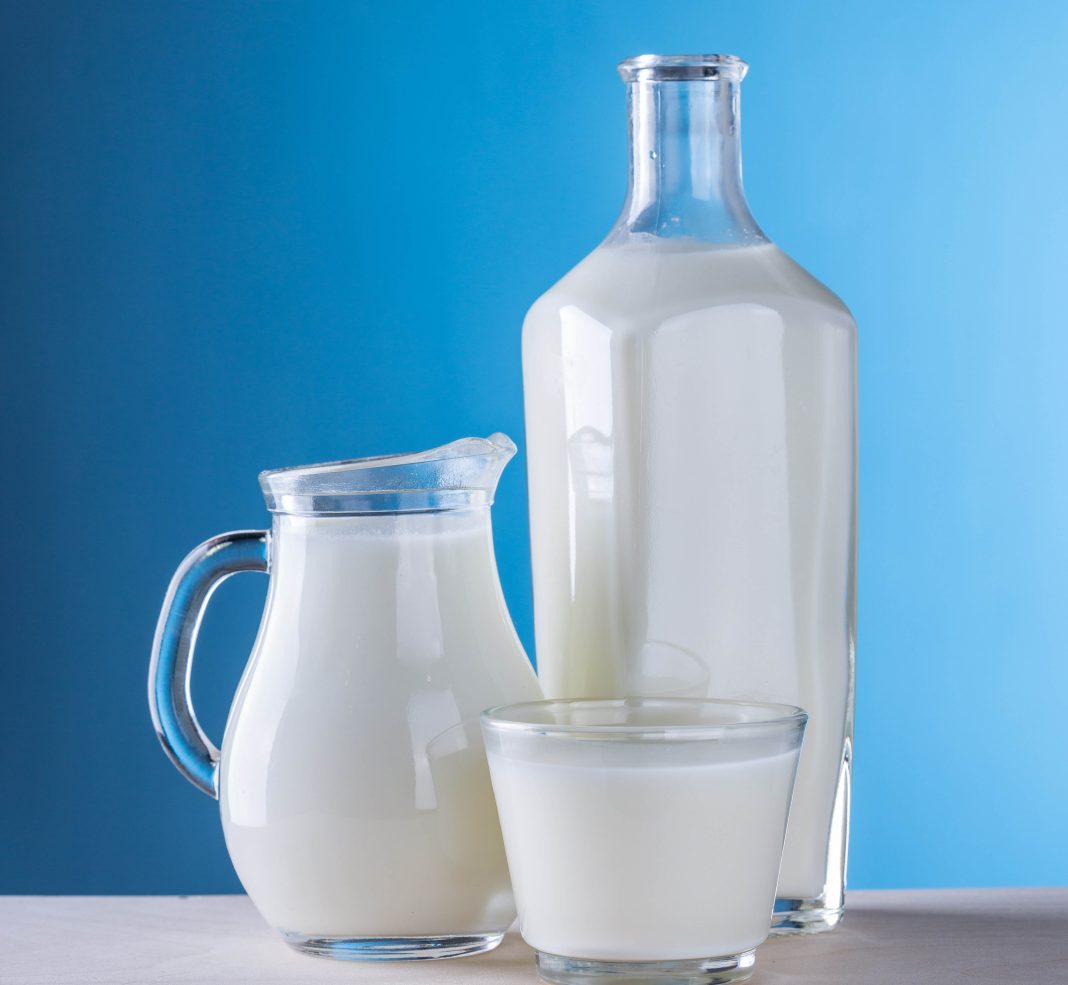









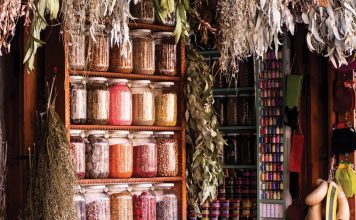

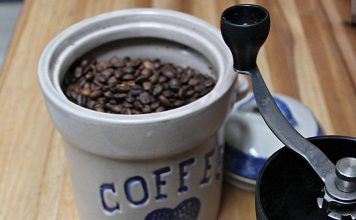
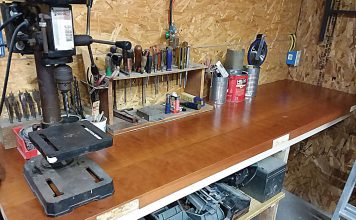
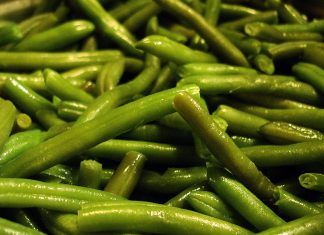

Nice post !
Thanks
I’d like some ice cream from your place.